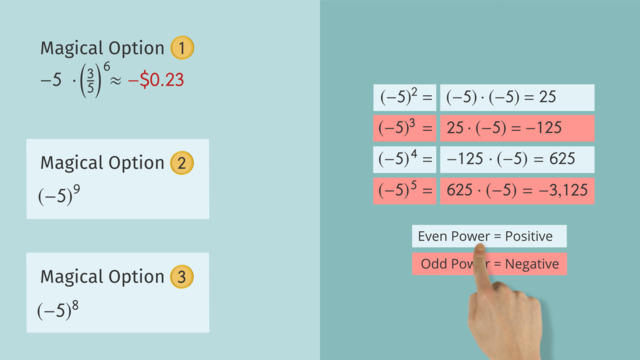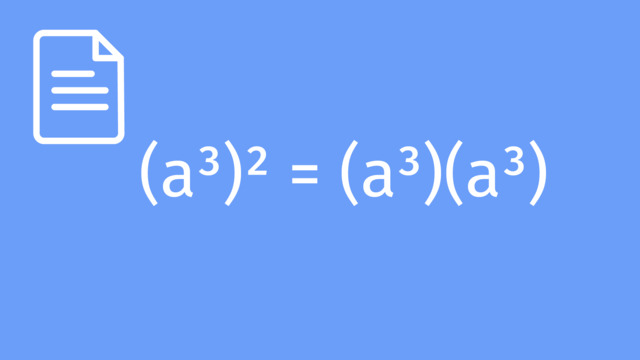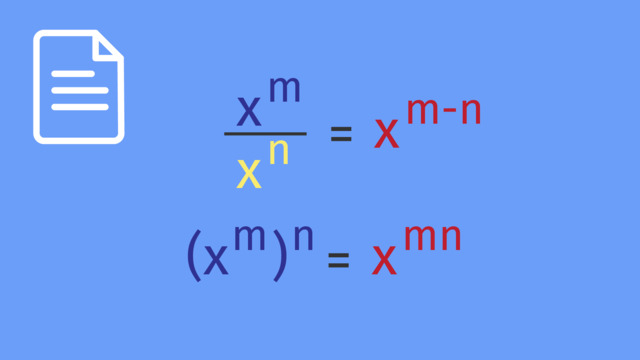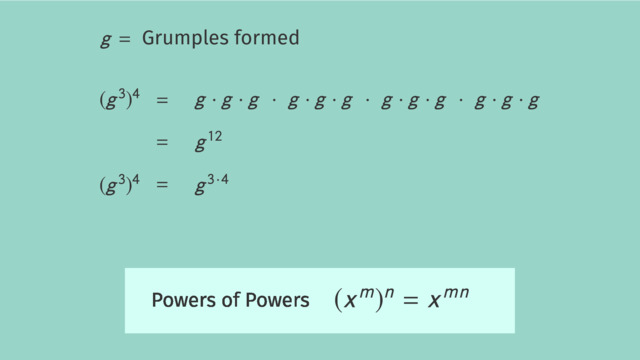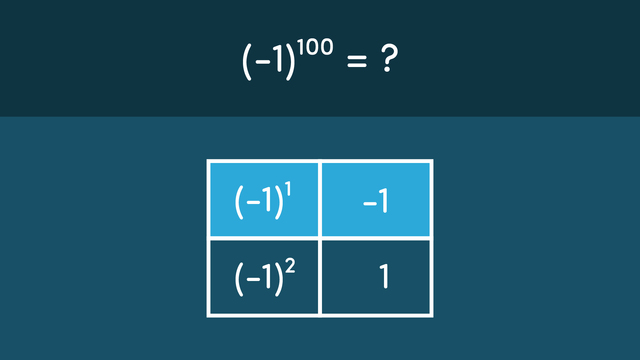Square Roots
Basics on the topic Square Roots
Square Roots – Definition
Square roots are a fundamental concept in mathematics, especially in algebra and geometry. They are used in various real-life scenarios, such as calculating the area of land, determining the size of a television screen, or in architectural designs.
The square root of a number is a value that, when multiplied by itself, gives the original number. For example, the square root of $9$ is $3$ because $3 \times 3$ equals $9$.
The Square Root Symbol
There are two important terms to remember when you’re dealing with square roots. They are the radical sign and the radicand.
The radical sign: The radical sign, denoted as $\sqrt{}$, is a symbol used in mathematics to indicate the square root of a number or expression placed within it. This sign is essential in operations involving square roots.
The radicand: The radicand is the number or expression inside the radical sign. It is the value for which the square root is being calculated. For example, in $\sqrt{25}$, the radicand is $25$.
Understanding Square Roots
The concept of square roots is crucial for working with the Pythagorean theorem, understanding geometric shapes, and dealing with powers and exponents.
The following concepts are helpful when dealing with square roots:
- Perfect squares: Numbers like $9$, $16$, or $25$ are perfect squares because they can be expressed as the square of an integer.
- Irrational numbers: Square roots of non-perfect squares, like $\sqrt{2}$ or $\sqrt{17}$, are irrational numbers. They cannot be expressed as a simple fraction and have non-repeating, non-terminating decimal representations. Here is some more information on these Types of Numbers amongst others!
- Positive and negative roots: Every positive number has two square roots - a positive and a negative root. For instance, both $+3$ and $-3$ are square roots of $9$.
Perfect Squares – Chart
The table below shows an overview of common perfect squares:
| Square Root and Solution | Proof |
|---|---|
| $ \sqrt{1} = 1 $ | $ 1^2 = 1 $ |
| $ \sqrt{4} = 2 $ | $ 2^2 = 4 $ |
| $ \sqrt{9} = 3 $ | $ 3^2 = 9 $ |
| $ \sqrt{16} = 4 $ | $ 4^2 = 16 $ |
| $ \sqrt{25} = 5 $ | $ 5^2 = 25 $ |
| $ \sqrt{36} = 6 $ | $ 6^2 = 36 $ |
| $ \sqrt{49} = 7 $ | $ 7^2 = 49 $ |
| $ \sqrt{64} = 8 $ | $ 8^2 = 64 $ |
| $ \sqrt{81} = 9 $ | $ 9^2 = 81 $ |
| $ \sqrt{100} = 10 $ | $ 10^2 = 100 $ |
| $ \sqrt{121} = 11 $ | $ 11^2 = 121 $ |
| $ \sqrt{144} = 12 $ | $ 12^2 = 144 $ |
It is helpful to memorize the perfect squares up until at least $12^2=144$, especially when you progress to more challenging concepts like simplifying radical expressions.
Square Roots – Guided Practice
Let’s work through the following question together: Find the square root of $49$.
Calculating Square Roots Using Prime Factorization
When you're finding the square root of a number, especially a large one, prime factorization is a useful tool. This method involves breaking down a number into its prime factors – the prime numbers that multiply together to make the original number. Once you have the prime factors, you can easily find the square root, especially for perfect squares.
| Step | Description |
|---|---|
| 1 | Create a factor tree: Start by making a factor tree to break down the number into its prime factors. |
| 2 | Identify prime factors: Once you've completed the factor tree, list out all the prime factors you've found. |
| 3 | Group into pairs: Arrange the prime factors into pairs. If there’s an unpaired factor, the number is not a perfect square. |
| 4 | Multiply for square root: Multiply one factor from each pair to find the square root of the original number. |
- The prime factors of $144$ are $2 \cdot 2 \cdot 2 \cdot 2 \cdot 3 \cdot 3$.
- These can be paired into three total groups: $2 \cdot 2 \cdot 3$.
- $2 \cdot 2 \cdot 3 = 12$ so the square root of $144$ is $12$.
Square Roots – Exercises
Here are some more exercises on square roots. Find the answer to the question and click on the question box to reveal the correct answer.
Square Roots – Real-World Problems
Let’s take a look at some real-world examples including square roots.
Square Roots – Summary
Let’s review what we’ve learned about square roots in this text:
Key Learnings from this Text:
- Square roots help find a number that, when squared, gives the original number.
- Square roots of perfect squares are integers, while those of non-perfect squares are irrational.
- Every positive number has two square roots: one positive and one negative.
- The radical sign, denoted as $\sqrt{ }$, is a symbol used in mathematics to indicate the square root of a number or expression placed within it.
- The radicand is the number or expression inside the radical sign.
Understanding Square roots can come in handy when you learn more about the Pythagorean theorem.
Square Roots – Frequently Asked Questions
Transcript Square Roots
You just bought yourself a new poster for your bedroom that has an area of six thousand four hundred centimeters squared. The poster is in the shape of a square, and you must find the side lengths to see where it will fit on your wall before hanging. We can learn more about 'square roots' to determine the dimensions of the square-shaped poster. The square root of a number is a value that, when multiplied by itself, gives the original number. This is a radical sign, the symbol used for the square root function. The term under the radical sign is called a radicand. We can read this as the square root of p, which is defined to mean the positive solution to the equation x squared equals p. Let's now try to find the square root of nine. To solve this, we must think, what multiplied by itself is nine? Three times itself is nine. So the square root of nine equals three. If a radical sign is used like it is in this question, only a positive square root needs to be found, which is also known as the principal square root. However, there is another integer that, when multiplied by itself, equals nine, and that is negative three. Both negative and positive three are the square roots of nine, but because the square root function only gives us the positive solution we can use a plus or minus symbol to show the two roots. Let's look at a problem and solve for the missing variable. Remember x squared means x times x. To find the value of x we will find the square root of both sides. There are two solutions nine, and negative nine because if we square these values, they both result in eighty one. A 'perfect square' is a number that can be expressed as the product of an integer multiplied by itself. For example, the numbers nine and eighty-one are both perfect squares since they have integer roots. Let's see if we can find the square root of twenty. As much as you try, there is not a single integer that multiplies by itself to equal twenty, so this is not a perfect square. To solve for x we can use a calculator to find the square root, which would be this irrational number, and don't forget both the positive and negative square root are solutions. Let's look back at the poster you got for your bedroom. The size listed is six thousand four hundred centimeters squared, but we need to find the dimensions. To find the dimensions of the square poster, we can find the square root of the area, since the area of a square is its side length multiplied by itself. It turns out this number is a perfect square, can you think of what number squared is equal to six-thousand four hundred? We already know that eight squared is sixty-four, if we add a zero to each eight and multiply eighty times eighty, we will arrive at six-thousand four hundred. The solution is plus or minus eighty. However, since we are representing distance, we will not need the negative root, therefore the dimensions of the poster are eighty centimeters by eighty centimeters! Let's recap what we have learned about square roots. A square root is a value that, when multiplied by itself, gives the original number. Every positive number has a square root, but only specific positive numbers are perfect squares. This only happens when an integer is multiplied by itself. The understanding of square roots is important when the goal is to find the dimensions of a square or the missing side of a right triangle. Let's see how that poster fits on your wall!
Square Roots exercise
-
What are the square roots?
HintsThe square root of a number is a value that, when multiplied by itself, gives the original number.
For example, the square root of $9$ is $3$ and $-3$.
That is because $3\times3 = 9$ and $-3\times-3 = 9$
$\sqrt{16} = 4\times4$
$\sqrt{16} =- 4\times-4$
The square root of $16$ is $4$ and $-4$
Solution$\sqrt{100} = 10$ and $-10$
- $100 = 10\times10$ and $-10\times-10$
- $81 = 9\times 9$ and $-9\times-9$
- $49 = 7\times7$ and $-7\times-7$
- $25 = 5\times5$ and $-5\times-5$
- $36 = 6\times6$ and $-6\times-6$
-
Find the prime factors.
HintsStart by making a factor tree to break down the number into its prime factors.
For example, start like this.
When you have completed the factor tree, list all of the factors you have found.
The product of prime factors means they should be multiplied together and should equal $24$.
Solution$\bf{2\times2\times2\times3 = 24}$
-
Find the product of prime numbers.
HintsTo find a square root from a product of primes we pair the primes.
For example,
When we have paired the primes, we multiply one of each pair together to give the square root.
Solution$2\times2\times5\times5$ square root = $10$
$3\times3\times7\times7$ square root = $21$
$5\times5\times3\times3\times2\times2$ square root = $30$
$2\times7\times2\times3\times7\times3$ square root = $42$
We pair the prime numbers and multiply one of each pair together.
For example,
-
Find the nearest square root.
HintsAs $58$ is not a perfect square we will not find it on this list.
We are asked to find an estimate of the square root by trapping it between the two nearest square roots.
Find the nearest value above and below $58$.
When you have trapped the square between two other squares, you can square root the two answers.
$\sqrt{49} = 7$
$\sqrt{64} = 8$
$\sqrt{58}$ lies between them.
SolutionBetween $7$ and $8$
$\sqrt{58}$ lies between $\sqrt{49}$ and $\sqrt{64}$
$\sqrt{49} = 7$
$\sqrt{64} = 8$
-
Find the square root.
Hints- Create a factor tree.
- Circle the prime factors.
- Group them into pairs.
- Multiply one of each pair together to give you the square root.
When you have created the prime factor tree and found the factors.
Find the pairs and multiply one from each pair together to get the square root.
SolutionCorrect answers are $9$ and $-9$.
- Create a factor tree.
- Circle the prime factors. $3$, $3$, $3$ and $3$.
- Group them into pairs. $3$s and $3$s.
- Multiply one of each pair together to give you the square root.
$9\times9 = 81$ also $-9\times-9 = 81$
-
Calculate the missing sides
HintsThe area of a square can be found by multiplying the sides together.
On this example, $3\times3 = 9$.
We are given the area, and asked to find the side length.
So, we do the inverse by finding the square root.
To find the square root of $225$ we start a factor tree and list the prime factors.
We then put them in pairs and multiply one from each pair together.
SolutionSides are $15cm$
The pairs of factors were 3$\times$3 and 5$\times$5.
We multiply one of each pair together.
$5\times3 = 15$
As it is a physical length we do not use the negative square roots here.





